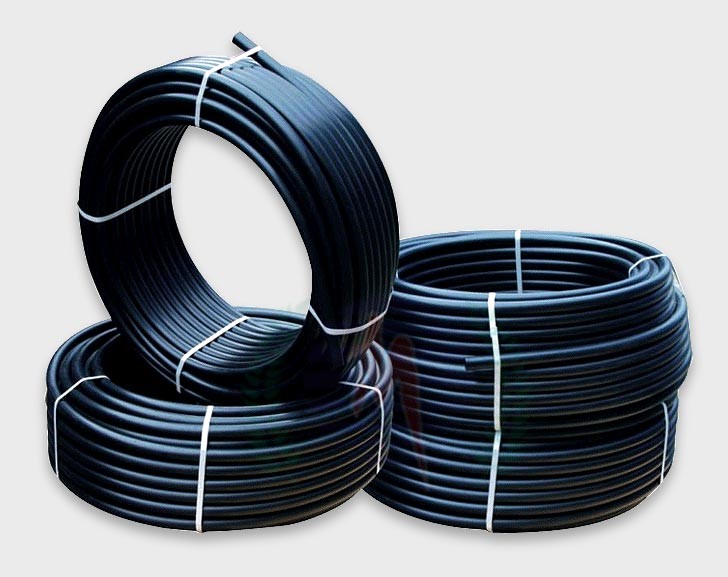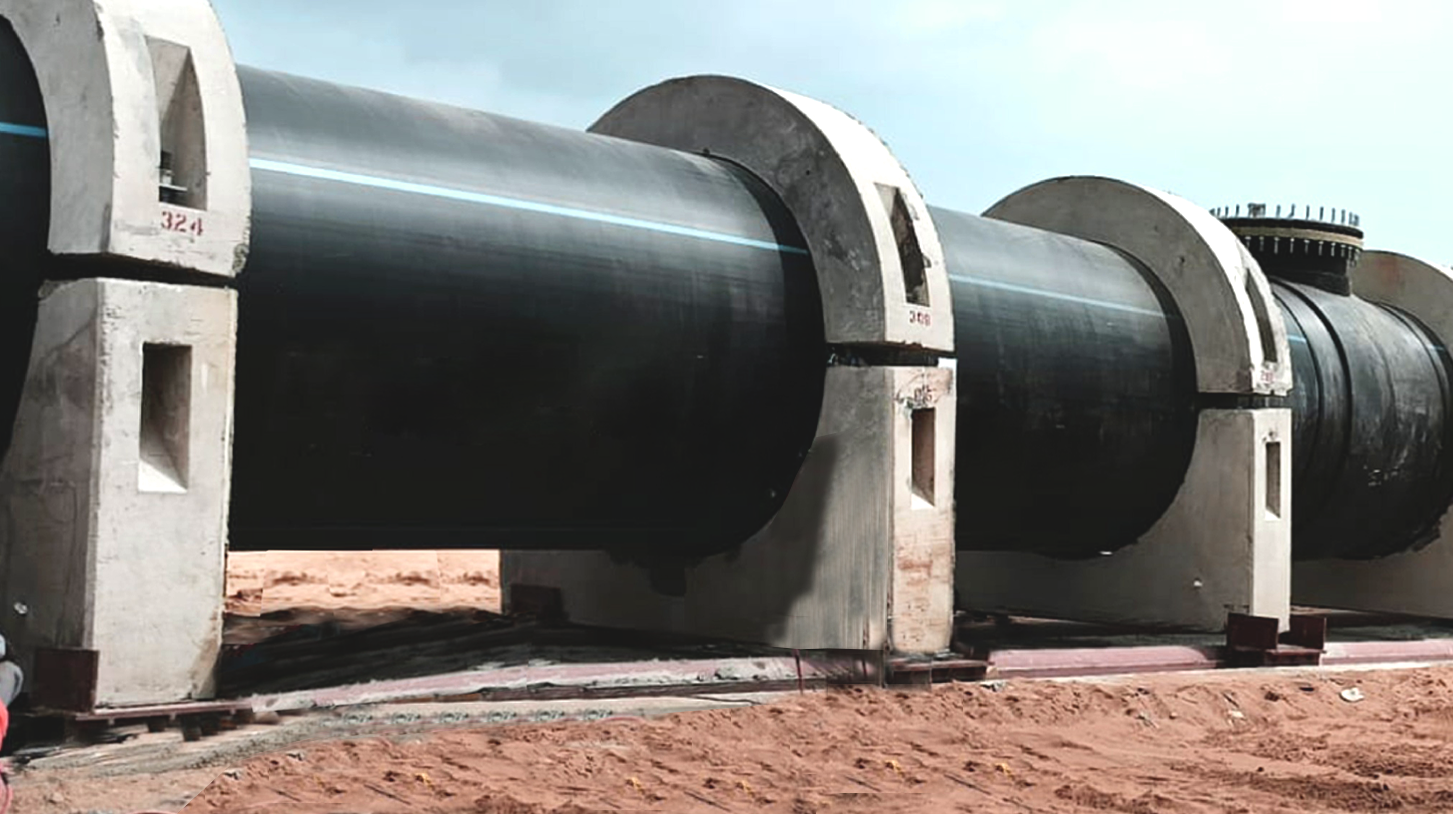American Plastics HDPE Pipe for Oilfield: Durability in Harsh Environments
Explore the Production Refine Behind High-Quality HDPE Pipe and Its Applications
The production process of premium HDPE pipes is intricate and systematic. It begins with the choice of basic materials that improve efficiency. Following this, ethylene undertakes polymerization to form resin, which is then shaped through extrusion. Quality assurance is vital, making sure that the final product meets strict standards. However, the journey of HDPE pipelines does not finish with manufacturing. Their applications throughout different industries reveal a wider relevance worth checking out.
Comprehending HDPE: Properties and Advantages

High-density polyethylene (HDPE) is a functional thermoplastic recognized for its resilience and resistance to different ecological factors. This material shows superb tensile strength, making it suitable for requiring applications. Its low-density structure adds to a lightweight item, helping with simplicity of dealing with and installment. HDPE additionally showcases impressive resistance to chemicals, which reduces destruction when revealed to extreme substances.
The product's low wetness absorption better improves its long life, making it excellent for use in pipes and storage space tanks. Additionally, HDPE is immune to ultraviolet (UV) radiation, guaranteeing that items preserve their honesty even when exposed to sunshine. In addition, its flexibility enables the development of detailed shapes without jeopardizing toughness. The environment-friendly nature of HDPE, typically stemmed from recycled products, includes in its allure, promoting sustainable methods in production. Generally, these residential properties and benefits make HDPE a preferred selection for different industrial and customer applications.
Resources Option for HDPE Production
The selection of basic materials for HDPE production is important to verify the last product meets the desired requirements and high quality standards. High-density polyethylene (HDPE) is primarily created from polymerized ethylene, acquired from nonrenewable fuel sources such as all-natural gas or unrefined oil. The quality of these feedstocks substantially influences the mechanical and thermal properties of the final HDPE.
Ingredients also play a substantial duty in boosting HDPE's efficiency, consisting of anti-oxidants, UV stabilizers, and colorants, which improve longevity and resistance to ecological aspects. The choice process should consider not only the chemical make-up of the raw materials but likewise their processing characteristics to ensure efficient production.
Furthermore, the sourcing of resources ought to prioritize sustainability and compliance with ecological regulations, as responsible practices are crucial in today's market. Inevitably, cautious resources choice lays the structure for generating high-grade HDPE pipes ideal for diverse applications.
The Extrusion Process: Shaping HDPE Pipe
The extrusion procedure plays an important duty fit HDPE pipes, starting with careful product prep work techniques that assure ideal circulation and uniformity. Just as essential is the layout of the die, which straight affects the last dimensions and surface area top quality of the pipe. With each other, these factors contribute considerably to the effectiveness and high quality of HDPE pipe production.
Material Preparation Techniques
Reliable manufacturing of HDPE pipelines begins with precise product prep work techniques, especially the extrusion procedure. Throughout this stage, high-density polyethylene material is very first dried out to remove wetness, ensuring suitable flow features. The resin is then fed right into the extruder, where it goes through home heating and melting, changing into a viscous state. This heating process is thoroughly managed to maintain the material's integrity and performance. The molten HDPE is compelled with a die, shaping it into a continuous pipe type. Proper temperature level administration during extrusion is vital, as it straight affects the product's properties and the end product top quality. Once shaped, the HDPE pipeline is cooled down and reduced to defined lengths, all set for succeeding processing and applications.
Die Layout Relevance
Precision in die style plays a necessary role in the extrusion process of HDPE pipes. The die acts as the final shaping device, directly influencing the pipeline's measurements, wall surface density, and surface area coating. A well-designed die guarantees uniform product circulation, reducing issues such as irregularities and weak places. The geometry of the die must be enhanced to fit the certain properties of HDPE, including its viscosity and thermal habits throughout extrusion. Additionally, the cooling price of the product as it passes through the die can substantially influence the pipe's architectural stability. Consequently, buying innovative die technology is important for producers intending to produce high-quality HDPE pipelines that fulfill industry requirements and client assumptions.
Top Quality Control Measures in HDPE Production
Various variables influence the top quality of HDPE pipe manufacturing, effective high quality control steps are critical here to assure uniformity and integrity in the last item (Texas hdpe pipe manufacturer). Trick high quality control techniques consist of strenuous product inspection, confirming that the raw polyethylene meets recognized requirements for purity and density. Throughout the extrusion process, specifications such as temperature level, stress, and cooling time are closely monitored to maintain dimensional accuracy and structural stability
Additionally, post-production screening is vital; suppliers commonly conduct hydrostatic examinations to analyze the pipe's toughness and resistance to pressure. Aesthetic assessments for surface area defects better enhance quality guarantee. Qualification from pertinent standards organizations, like ASTM or ISO, supplies an additional layer of reliability. By executing these extensive quality assurance procedures, manufacturers can minimize problems, boost efficiency, and ensure that the HDPE pipelines satisfy the specific requirements of numerous applications, ultimately causing consumer fulfillment and rely on the item.
Applications of HDPE Pipe Throughout Industries
HDPE pipes are used throughout different industries due to their sturdiness and versatility. In water distribution systems, they guarantee effective distribution, while in wastewater administration, they offer trustworthy remedies for waste transportation. Additionally, farming watering networks gain from HDPE's resistance to deterioration and flexibility, making it a perfect selection for modern-day farming methods.

Water Distribution Systems
A substantial variety of industries rely upon high-density polyethylene (HDPE) pipes for efficient water distribution systems. Understood for their resilience and resistance to deterioration, HDPE pipelines are extensively made use of in community water supply networks, farming irrigation, and industrial applications. Their lightweight nature assists in easy handling and setup, lowering labor costs and time. Furthermore, HDPE pipelines can suit numerous pressure degrees, making them ideal for both reduced and high-pressure systems. hdpe pipe in stock Midland TX. The adaptability of the product enables for smooth integration into existing facilities, reducing the demand for comprehensive excavation. HDPE's resistance to chemical leaching guarantees that the water delivered remains safe and clean, making it an excellent selection for preserving the high quality of drinkable water across various fields.
Wastewater Administration Solutions
Effective water distribution systems also lead the way for innovative wastewater administration solutions, where high-density polyethylene (HDPE) pipelines play a significant duty. Distinguished for their toughness and resistance to deterioration, HDPE pipes are optimal for moving wastewater in various settings. Their adaptability enables very easy installment in complex atmospheres, reducing the need for substantial excavation. In addition, HDPE's smooth interior surface area decreases friction, boosting circulation rates and effectiveness. These pipes are additionally immune to chemical leaching, making certain that contaminants do not endanger the surrounding atmosphere. Industries, municipalities, and treatment centers progressively count on HDPE pipelines for their reliability and long life, making them a favored selection for modern-day wastewater monitoring systems. This flexibility emphasizes the important value of HDPE pipelines throughout countless applications.
Agricultural Watering Networks
Agricultural watering networks profit greatly from the use of high-density polyethylene (HDPE) pipelines, which offer efficient and trustworthy water shipment to crops. HDPE pipelines are light-weight, making them simple to deliver and set up, while their versatility enables for various configurations in diverse surfaces. These pipes show exceptional resistance to corrosion, chemicals, and UV radiation, making sure sturdiness in rough farming settings. Furthermore, their smooth interior surface area reduces rubbing loss, enhancing water flow and minimizing energy costs connected with pumping. The long life of HDPE pipes, frequently going beyond half a century, contributes to lower maintenance and substitute expenses. Subsequently, farmers progressively rely upon HDPE pipes to boost irrigation performance and advertise lasting agricultural practices, eventually resulting in enhanced crop yields and source conservation.
Future Trends in HDPE Pipeline Technology
As the demand for sustainable and effective facilities expands, developments in HDPE pipe modern technology are poised to transform numerous industries. Arising trends include the combination of smart technologies, such as sensors and IoT capabilities, which promote real-time monitoring of pipe conditions, reducing upkeep expenses and protecting against leaks. Furthermore, the advancement of advanced production techniques, such as 3D printing, is making it possible for the manufacturing of complex, personalized pipe designs that deal with certain job requirements.
Moreover, the concentrate on recycling and circular economy practices is driving the technology of HDPE pipes made from recycled products, improving sustainability. Boosted jointing methods, such as electro-fusion and mechanical installations, are likewise boosting installation effectiveness and integrity. The growing focus on environmental policies is pressing producers to adopt greener production procedures, ensuring that HDPE pipes not only meet market standards but also promote an even more lasting future for framework growth.
Frequently Asked Concerns
Exactly How Does HDPE Compare to Other Plastic Products?
HDPE outperforms numerous various other plastic products regarding resilience, chemical resistance, and adaptability. Its low density and high tensile strength make it perfect for different applications, often surpassing choices in both performance and longevity.
What Are the Ecological Impacts of HDPE Manufacturing?
The environmental effects of HDPE production consist of greenhouse gas exhausts, power consumption, and potential pollution from making procedures. Furthermore, improper disposal can cause soil and water contamination, increasing problems about long-term environmental impacts.
Can HDPE Water Lines Be Reused?
Yes, HDPE pipes can be recycled. Lots of facilities approve used HDPE for handling, transforming it right into new products. This reusing adds to sustainability initiatives, reducing plastic waste while saving sources and power in the production cycle.
What Is the Life Expectancy of HDPE Water Lines?

Just How Do Temperature Level Variants Affect HDPE Pipe Performance?
Temperature level variations significantly affect HDPE pipeline efficiency, affecting flexibility and strength. High temperatures can cause softening, while low temperatures may create brittleness, ultimately influencing the pipe's resilience and suitability for numerous applications in diverse atmospheres.